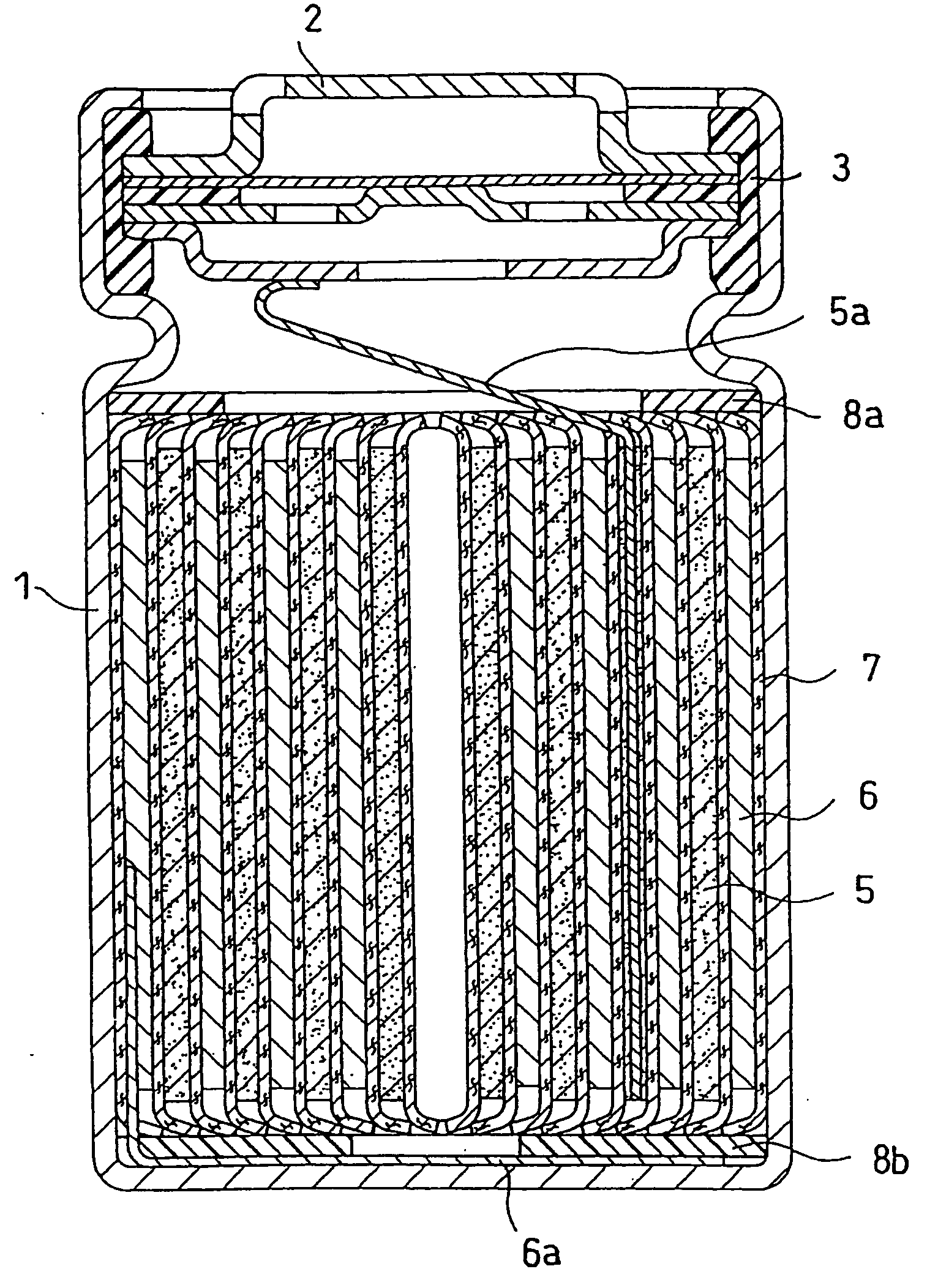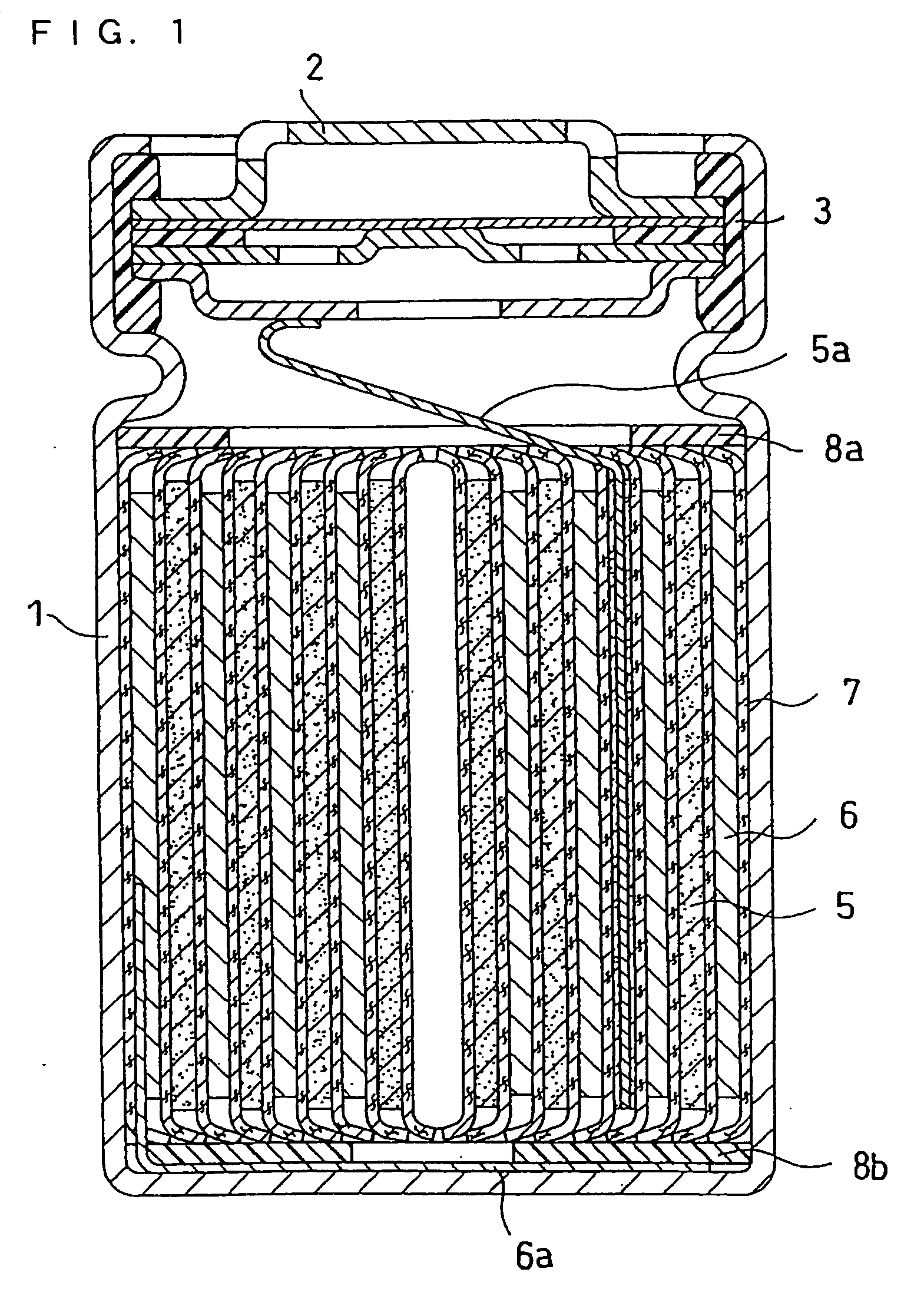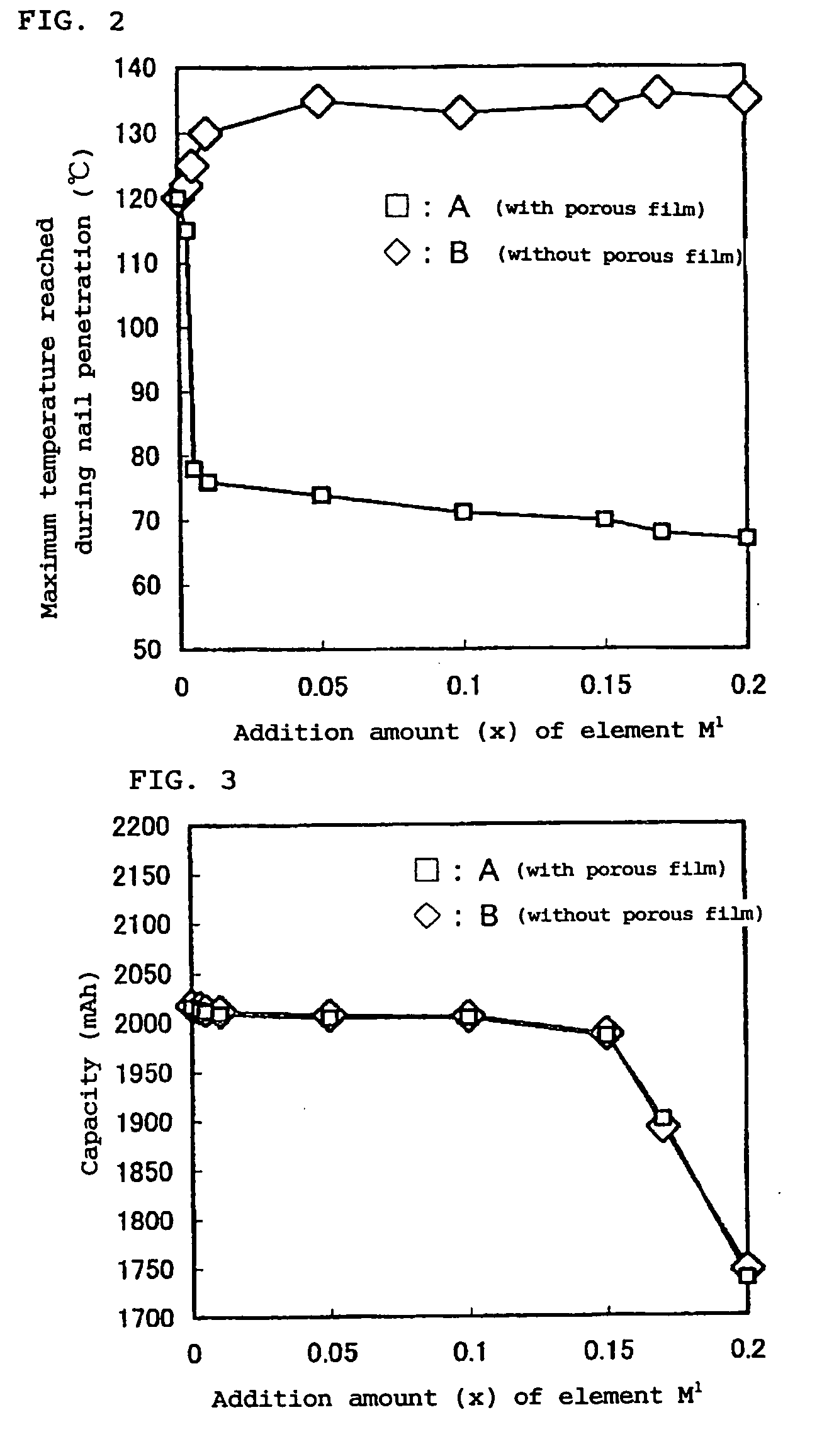Lithium Ion Secondary Battery
a secondary battery and lithium ion technology, applied in the field of lithium ion secondary batteries, can solve the problems of excessive current flow, disadvantageous use of positive electrode active materials having excellent thermal stability, and difficulty in ensuring a high level of safety in nail penetration tests and heating tests, etc., to achieve the effect of increasing the conductivity of lithium composite oxide, high battery safety, and increasing the thermal stability of the crystal structur
- Summary
- Abstract
- Description
- Claims
- Application Information
AI Technical Summary
Benefits of technology
Problems solved by technology
Method used
Image
Examples
example 1
(i) Production of Positive Electrode
[0078] An aqueous solution containing cobalt sulfate (CoSO4) at a concentration of 0.95 mol / L and magnesium nitrate at a concentration of 0.05 mol / L was continuously supplied into a reaction vessel, while adding sodium hydroxide dropwise into the reaction vessel such that the pH of water was 10 to 13, thereby synthesizing a hydroxide, namely Co0.95Mg0.05(OH)2, serving as the precursor of the active material. This precursor was placed in a baking furnace, and preliminary baked at 500° C. for 12 hours in the air atmosphere, thereby obtaining a predetermined oxide.
[0079] The oxide obtained by the preliminary baking and lithium carbonate were mixed such that the molar ratio of lithium, cobalt and magnesium was 1:0.95:0.05, and the mixture was temporarily baked at 600° C. for 10 hours, followed by pulverization.
[0080] Subsequently, the pulverized baked product was baked again at 900° C. for 10 hours (final baking), followed by pulverization and cla...
example 2
[0089] An aqueous solution containing cobalt sulfate at a concentration of 0.90 mol / L, magnesium nitrate at a concentration of 0.05 mol / L and aluminum nitrate at a concentration of 0.05 mol / L was prepared. Using this aqueous solution, a hydroxide, namely Cu0.90Mg0.05Al0.05(OH)2, serving as the precursor of the active material was synthesized according to Example 1. This precursor was placed in a baking furnace, and preliminarily baked at 500° C. for 12 hours in the air atmosphere, thereby obtaining a predetermined oxide.
[0090] A lithium composite oxide (positive electrode active material) represented by Li (Co0.90Mg0.05Al0.05)O2 was obtained by performing the same operation as in Example 1, except that the oxide obtained by the preliminary baking and lithium carbonate were mixed such that the molar ratio of lithium, cobalt, magnesium and aluminum was 1:0.90:0.05:0.05. Then, a cylindrical battery was fabricated in the same manner as in Example 1, except that this positive electrode ...
example 3
[0093] A cylindrical battery was fabricated in the same manner as in Example 1, except that the porous film was formed on the positive electrode material mixture layer, instead of on the negative electrode material mixture layer.
Evaluation
[0094] The battery capacities of the fabricated batteries were measured in the following manner. In addition, a nail penetration test and a 180-degree peel test were performed in the following manner. The results are shown in Table 1.
Battery Capacities
[0095] First, each of the batteries was subjected to preliminary charging / discharging in the patterns shown below. Thereafter, each of the batteries was stored for seven days under an environment with 45° C.
1) constant current charge: 400 mA (end voltage 4.0 V)
2) constant current discharge: 400 mA (end voltage 3.0 V)
3) constant current charge: 400 mA (end voltage 4.0 V)
4) constant current discharge: 400 mA (end voltage 3.0 V)
5) constant current charge: 400 mA (end voltage 4.0 V)
[0096]...
PUM
| Property | Measurement | Unit |
|---|---|---|
| temperature | aaaaa | aaaaa |
| temperature | aaaaa | aaaaa |
| temperature | aaaaa | aaaaa |
Abstract
Description
Claims
Application Information
 Login to View More
Login to View More - R&D
- Intellectual Property
- Life Sciences
- Materials
- Tech Scout
- Unparalleled Data Quality
- Higher Quality Content
- 60% Fewer Hallucinations
Browse by: Latest US Patents, China's latest patents, Technical Efficacy Thesaurus, Application Domain, Technology Topic, Popular Technical Reports.
© 2025 PatSnap. All rights reserved.Legal|Privacy policy|Modern Slavery Act Transparency Statement|Sitemap|About US| Contact US: help@patsnap.com



